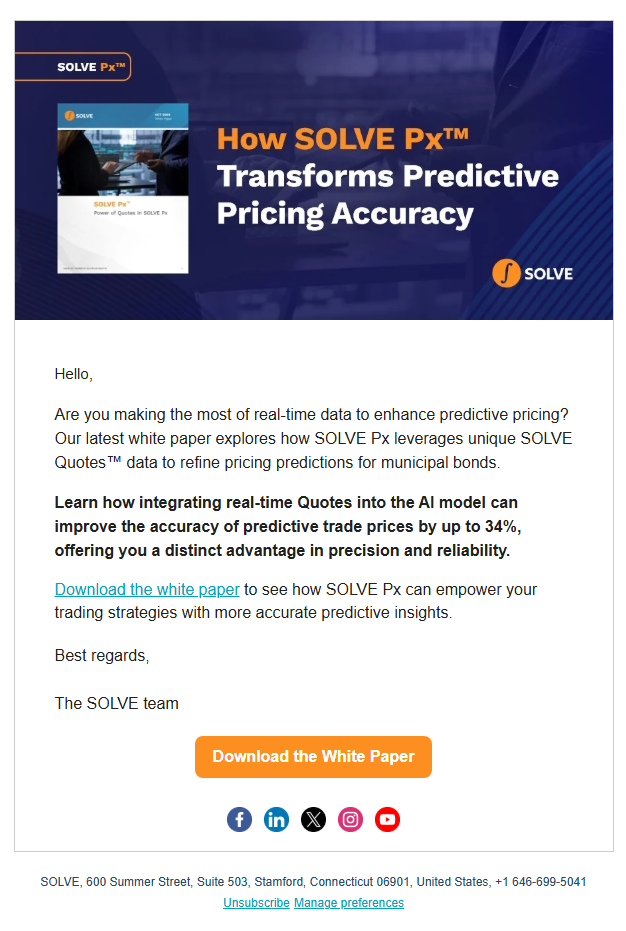Insights
What Advantage Can Muni Clients Get from SOLVE’s Pricing Solutions?
Transcript:
What Advantage Can Muni Data Clients Get from SOLVE’s Pricing Solutions?
So first off, I think it’s important to note that the way in which we deliver each of these unique things — so whether it’s access to trade data or predictive pricing, SOLVE PX, or our clients’ quotes are distinct modules or tools within our platform or data offerings — that’s really important. So, it’s not that someone has to take everything and rely on everything.
We do have clients who are very focused in on what is important to them. And so, by virtue of our offerings, the ability to break them apart, we’re able to do that and we’re also able to bring them together, which is really unique.
So for example, if you look at our ticker, our MUNI trade ticker, right, you’re seeing our quotes, you’re seeing MSRB real time trade data. Same thing for our secondary pricing tool. When you’re looking at the [SOLVE] Quotes platform, that’s where you’re going to have quotes, you’ll have some trade data in there and you’ll have the ability to have SOLVE PX in that user interface either with quotes or independently. And then all of the above that I’ve just described are going to be available to our clients and are available to our clients through data feeds.
Being able to leverage our underlying obligor database as well as select and significant filtering capabilities to again to be able to deliver back the information that’s most critical to our clients. In terms of a competitive advantage with all of this information in one place, I think it starts with the fact that we have an obligor database.
So, we have mapped every issuer to the obligated party, every issue to the issuer, every bond to the issue. So with the interrelationship of these critical components is a foundational aspect along with our sector designation as well. These are critical factors as we start to look for example, comparable securities which again permeate throughout the platform are available to our clients to help them.
So, some of our clients are going to be using that predictive price, our solid price for purposes of guard rails against their own model. They may use it as another data, another data source for the purpose of identifying trading opportunities both on the buy and the sell side. And still others are going to use it to feed their own internal models.
Others are going to use our [SOLVE] Quotes data for the reason that it was invented, right. So, it’s pre-trade price transparency, it’s something that some people say can’t be done, but we’ve been doing it for 13 years and doing it rather successfully. And so, it’s giving clients a full view of what’s going on in the market, pre-trade. And then of course having trade data is just a critical aspect and it is available through the MSRB. But again, we’re ingesting it within essentially real time about 3 or 4 seconds after the trade hits the MSRB. We have it in our data database available for our clients.
So the competitive advantage is really going to be driven by the specific user, whether you’re a trader, whether you’re an analyst, whether you’re a PM, you know, there’s going to be different component aspects of what we do or all of them together that are going to drive and then deliver the competitive advantage to our clients.
If you’re interested in learning more, feel free to reach out to us at sales@solvefixedincome.com or info@solvefixedincome.com.
 BDCs
BDCs  SOLVE Insights
SOLVE Insights  SOLVE Newsroom
SOLVE Newsroom 






